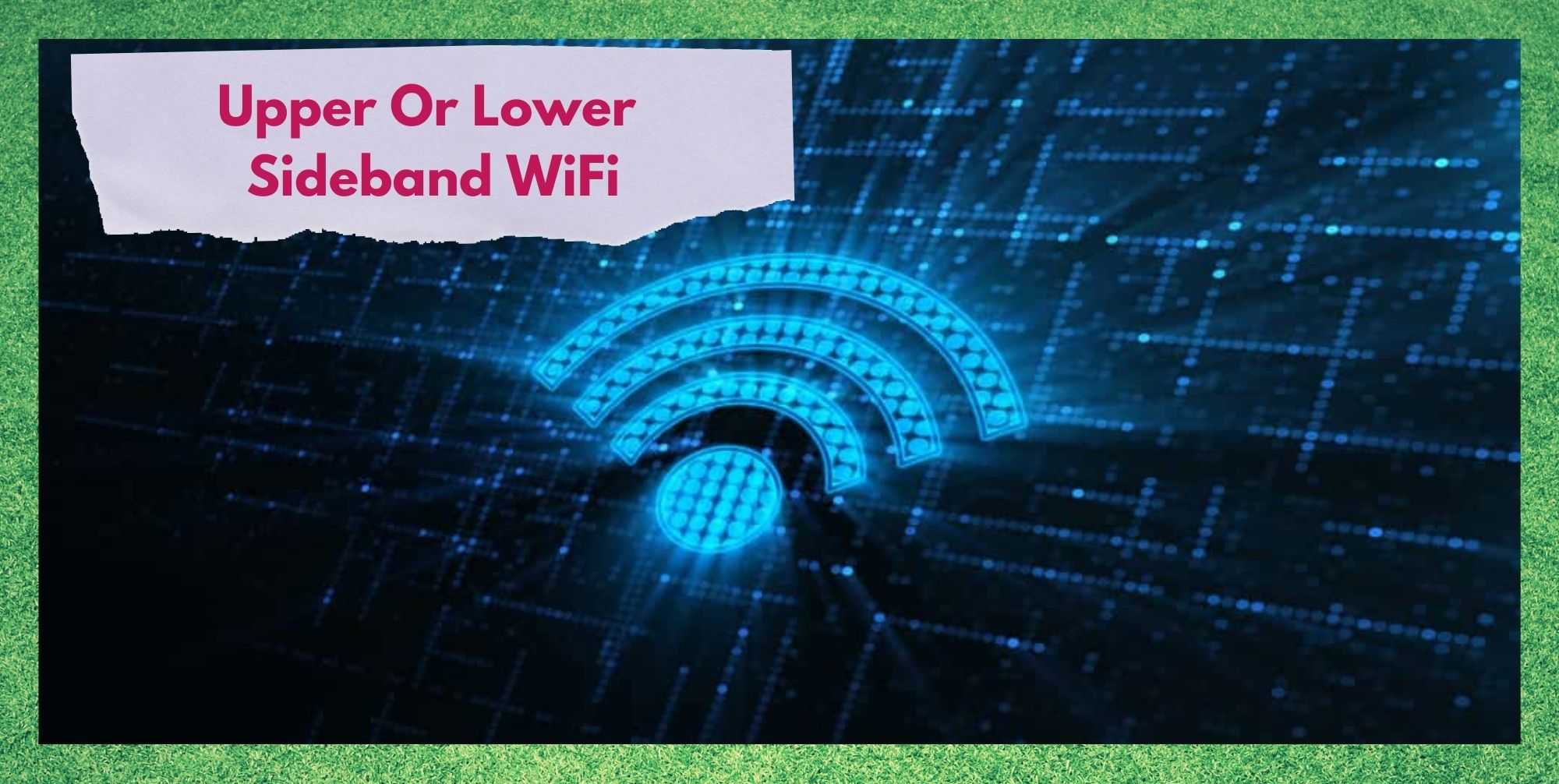
These days, practically everyone will have a decent and reliable connection to the internet. It’s just a given. However, this does not necessarily mean that we will know all that much about how it all works and what the different terminologies mean.
In general, the average user will just pay for their subscription, set up their gear, and then expect everything to just keep working indefinitely.
That being said, every now and then, people will get curious about a specific term relating to their Wi-Fi that they are seeing a lot of. Though we usually spend our time here rooting for fixes for tech-related issues, today we are just going to explain a term that seems to have more than a few people confused.
Of course, we are going to explain the increasingly common upper and lower sideband Wi-Fi terms. We will also go in to exactly what their respective functions are too. So, let’s get this started!
Upper Or Lower Sideband WiFi
As we always do with these explainer articles, we will kick off by explaining exactly what the function of the upper or lower sideband in the Wi-Fi is. Basically, what their function is, is that they will inform you of the access points of the main channel.
Put into practice, if you happen to be using 149 + 151 and the device you are using doesn’t support a 40MHz connection, this will mean that the selected channel is 149.
In opposition to this, if any given user has 151 + 149, their main channel will be 151. It is very rare that any of this ever matters though, yet it is always a better plan to have a sideband functioning in unison with the main one.
A great strength of the upper or lower sideband is that it is great for point-to-point communication. As a result of this, the sideband is often deployed as a means of communicating via radio frequencies at an amateur level.
As an added benefit, the sideband Wi-Fi is also very well suited to devices that operate on a lower bandwidth. Given this versatility, it also works perfectly when it comes to facilitating mobile communications.
So, now that we have gone through what the function of the upper or lower sideband is, we should probably clarify what the definition of the thing itself actually is.
Upper or Lower Sideband Definition
As a means to get things going, we will begin by stating that the sideband is defined by the control sideband. This will then mean that the control sideband will then decide which sideband will end up being deployed as the secondary or extension channel.
It is noteworthy that it effectively outlines the channels when the AP (access point) is working on a 40MHz channel.
So, what all of this means is that if the signal components are above those of the carrier, this will then consume the USB, which is in this case the short name for the upper sideband. Admittedly, this can get confusing considering the prevalence of the term to relate to a cable/connection, but that’s the established linguistic for it still.
Back to the point, if it is the case that the signal components lie below those of the carrier you are with, the inverse of the above will happen. Instead, it will consume the lower sideband, which is also frequently referred to as the LSB.
To put exact numbers on what each is good for – the lower sideband is best suited to frequencies that are lower than 10MHz, whereas the upper sideband is suited to those above that point.
What are the Benefits?
We are pretty sure that most of you will still be wondering what the benefits of upper or lower sideband Wi-Fi actually are, so we suppose we’d best make sure to cover that base too. If the sidebands of your Wi-Fi are configured properly, the signal will end up being transmitted much more effectively.
What happens is that the signals, by means of having been refined, will be able to travel much better and a higher quantity of signals will be sent too. On top of that, there are also benefits in terms of energy efficiency to be reaped here.
However, what we would consider the main strength of upper or lower sideband Wi-Fi is that high speed signals can be sent via these configurations.
On top of that, you can drastically reduce the potential for signal interference, thus making the whole thing a lot more reliable as a whole. Basically, your internet will be stronger, faster, and with a drastically reduced chance that the signal will drop.
Are there any Downsides?
Of course, nothing comes without the occasional downside or two. There always has to be some form of trade-off, and unfortunately the upper or lower sideband Wi-Fi is no exception to this rule.
For starters, the development and detection of signals is always going to be a pretty complex process. On top of that, it also needs a high-quality sideband Wi-Fi receiver, as well as a transmitter. Otherwise, you won’t really get the benefits of stable signals and frequency.


